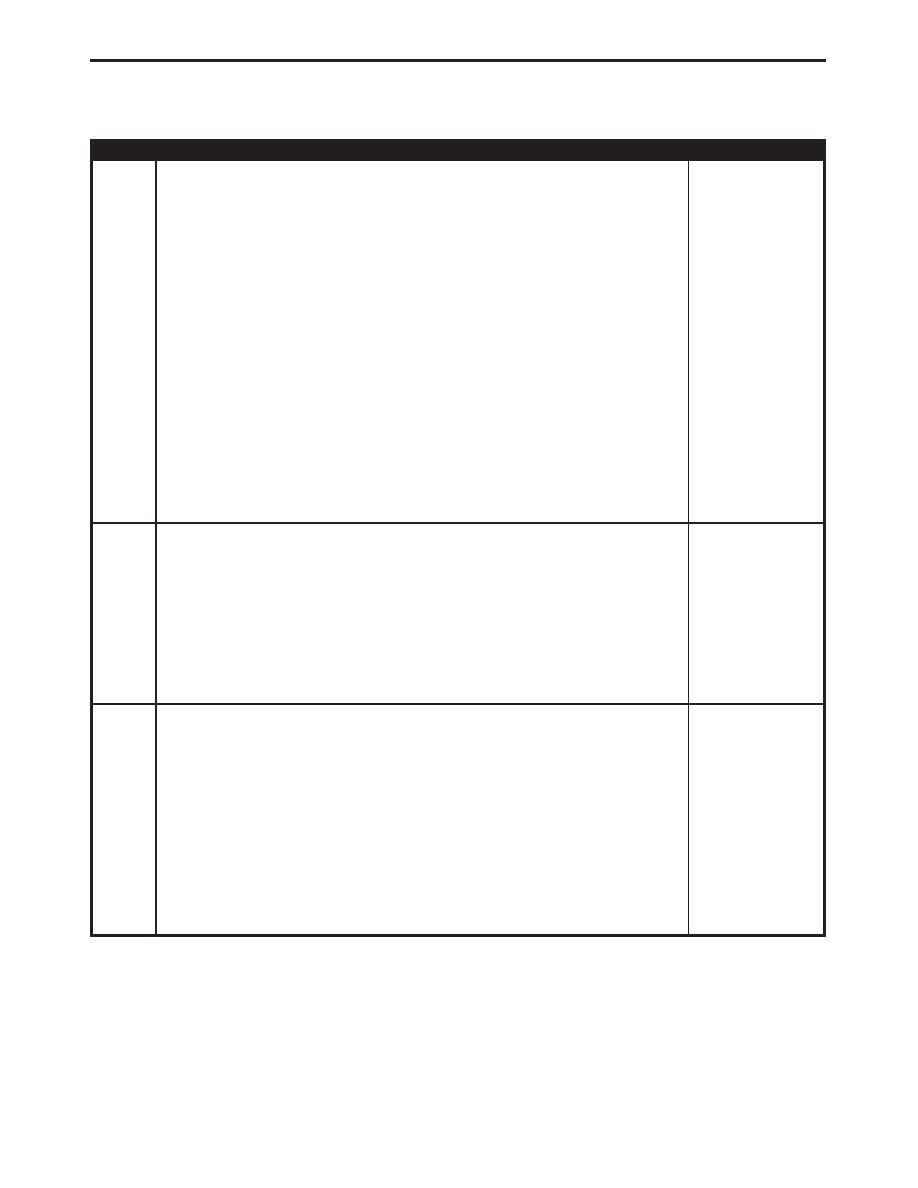Mercedes-Benz Sprinter / Dodge Sprinter. Manual - part 128

TEST
ACTION
APPLICABILITY
5
NOTE: If the ECM detects and stores a DTC, the ECM also stores the
engine/vehicle operating conditions under which the DTC was set. Some of
these conditions are displayed on the DRB III
t at the same time the DTC is
displayed.
NOTE: Before erasing stored DTCs, record these conditions. Attempting to
duplicate these conditions may assist when checking for an active DTC.
NOTE: Refer to the Service Information and perform the Air Bleed Proce-
dure before continuing diagnosis.
Turn the ignition on.
With the DRBIII
t, erase the ECM DTCs.
Start and idle the engine while monitoring for ECM DTC’s.
If the DTC does not reset at idle condition, test drive the vehicle under various load
and speed conditions to attempt to duplicate the fault.
NOTE: Driving the vehicle up and down steep hills or rapid cornering with
a low fuel level can cause this DTC to set. Verify with customer if Low Fuel
Light was illuminated when fault occurred.
With the DRBIII
t, read the ECM DTCs.
Does the DRBIII
t display this DTC?
All
Yes
→ Go To 6
No
→ Go To 16
6
Start the engine.
With the DRBIII
t in Sensors, compare the Fuel Pressure Setpoint with the Actual
Fuel Pressure readings.
NOTE: If there is air in the fuel system, the Actual Fuel Pressure will
oscillate above and below the Fuel Pressure Setpoint.
Does Actual Fuel Pressure oscillate above and below the Fuel Pressure Setpoint?
All
Yes
→ Refer to the Service Information to purge air from the fuel system.
Perform ROAD TEST VERIFICATION - VER-2.
No
→ Go To 7
7
Start the engine.
With the DRBIII
t in Sensors, compare the Fuel Pressure Setpoint with the Actual
Fuel Pressure readings.
NOTE: A sticking Fuel Pressure Solenoid is indicated by Actual Fuel
Pressure gradually dropping below the Fuel Pressure Setpoint then sud-
denly increasing (spiking) above the Fuel Pressure Setpoint.
Does Actual Fuel Pressure gradually decrease then suddenly increase (spike) above
the Fuel Pressure
All
Yes
→ Replace the Fuel Pressure Solenoid in accordance with the
Service Information.
Perform ROAD TEST VERIFICATION - VER-2.
No
→ Go To 8
120
DRIVEABILITY - DIESEL
P2015-FUEL RAIL PRESSURE MALFUNCTION MAXIMUM FUEL FLOW
EXCEEDED —
Continued